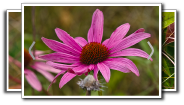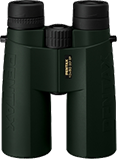black locust bug
(Lopidea robiniae)
Conservation • Description • Habitat • Ecology • Distribution • Taxonomy
|
|
||||||||||||||
Description |
Black locust bug is a small scarlet plant bug. It occurs in the Unites States from Maine to Maryland, west to Minnesota, Nebraska, and Oklahoma, and south along the Appalachian Mountains to northern Georgia. It also occurs in southern Canada from New Brunswick to Ontario. Nymphs are found probably exclusively on black locust. Adults are active from June through August. They are found nearly everywhere their host plant black locust grows. They disperse and migrate to other nearby shrubbery, eventually returning to a host plant to deposit eggs. Adults are soft-bodied, elongated, slender, almost parallel-sided, and ¼″ (6.3 to 6.8 mm) in length. This of one of the “pale” scarlet plant bugs. The color is almost always orangish yellow or yellowish orange (pale), rarely reddish, with dark grayish brown to black (dark) areas. The body is covered with silvery, closely appressed hairs mixed with unbranched erect hairs. Females are slightly larger and sometimes slightly more robust than males, but they are otherwise similar in color and hairiness (pubescence). The head is wider than the base of the plate covering the first segment of the thorax (pronotum). The front of the head is vertical. The compound eyes are large and oval. There are no simple eyes (ocelli). The sides of the upper part of the face (frons) and the top of the head (vertex) are black. There is a well-defined groove (jugal suture) on each cheek (gena) extending from the antennae base to beneath the eye. The beak-like part of the head containing the mouth parts (rostrum) has four segments. It is black, short, and stout. The neck is well defined. The antennae have four segments. They are black, thin, and long, much longer than the head and as long as the entire thickened wing covers (hemelytra). The second segment is considerably thicker than the third. The pronotum is wider than long and is bell-shaped when viewed from above. A dark area in the middle varies considerably in size and intensity. It may be broad, complete from front to rear, and distinct; narrow, short, and diffuse; or anywhere in between. The exoskeletal plate between the wing bases (scutellum), is large, triangular, and dark. There are two pairs of wings. The front wings (hemelytra) are longer than the hind wings and a little longer than the body. They are held flat over the body when at rest. The hemelytra have a thickened, leathery part at the base and a thin membranous part at the tip with a clear dividing line between the two. The thickened part is comprised of the narrow area (clavus) behind the scutellum when the wings are closed, and the broad marginal area (corium). At the end of the corium there is a small but distinct triangular area (cuneus). The clavus is mostly dark, pale just at the base. The corium is pale on the outer half, dark on the inner half. The cuneus is entirely pale. The membrane is dark. The veins are dark, not contrasting with the dark membrane. The legs are mostly black. The first segment (coxa) of each leg is partly pale. |
Size |
Total length: ¼″ (6.3 to 6.8 mm) |
Similar Species |
Habitat |
Wherever black locust is found |
Ecology |
Season |
June through August |
Behavior |
|
Life Cycle |
Black locust bug breeds on black locust. Eggs are laid in the stems or leaves of a host plant. The eggs overwinter and hatch in the following spring. |
Nymph Food |
Black locust |
Adult Food |
Plant juices |
Distribution |
||
|
Sources |
|
| 3/20/2025 | ||
Occurrence |
||
|
||
Taxonomy |
|
Order |
Hemiptera (True bugs, Hoppers, Aphids, and Allies) |
Suborder |
Heteroptera (True Bugs) |
Infraorder |
Cimicomorpha |
Superfamily |
Miroidea |
Family |
|
Subfamily |
Orthotylinae |
Tribe |
Orthotylini |
Genus |
Lopidea (scarlet plant bugs) |
Subordinate Taxa |
|
|
|
Synonyms |
|
Capsus robiniae |
|
Common Names |
|
black locust bug |
|
Glossary
Clavus
On Hemiptera: The hard part of the forewing that is adjacent to the scutellum when the wings are closed. Plural: clavi.
Corium
The thickened basal portion of the front wing that lies between the clavus and the membrane of insects in the family Hemiptera. Plural: coria.
Coxa
The first (most proximal) segment of the legs of most arthropods, including all insects, spiders, and crustaceans, and most arachnids. It attaches the leg to the body and connects to the trochanter. Plural: coxae.
Frons
The upper front part of an insect’s face, roughly corresponding to the forehead.
Gena
In insects: The area between the compound eye and the mandible; the cheek. In birds: The area between the the angle of the jaw and the bill; the feathered side (outside) of the under mandible. Plural: genae.
Hemelytron
The forewing of true bugs (order Hemiptera), thickened at the base and membranous at the tip. Plural: hemelytra.
Ocellus
Simple eye; an eye with a single lens. Plural: ocelli.
Pronotum
The exoskeletal plate on the upper side of the first segment of the thorax of an insect.
Pubescence
On plants: the fuzzy hairs on a leaf, bud, stem, fruit, flower, or other structure. On insects and arachnids: the hair-like processes (setae) on the body.
Rostrum
The stiff, beak-like projection of the carapace or prolongation of the head of an insect, crustacean, or cetacean.
Scutellum
The exoskeletal plate covering the rearward (posterior) part of the middle segment of the thorax in some insects. In Coleoptera, Hemiptera, and Homoptera, the dorsal, often triangular plate behind the pronotum and between the bases of the front wings. In Diptera, the exoskeletal plate between the abdomen and the thorax.
vertex
The upper surface of an insect’s head.
Visitor Photos |
||
Share your photo of this insect. |
||
This button not working for you? |
||
Alfredo Colon |
||
 |
 |
|
 |
 |
|
MinnesotaSeasons.com Photos |
||
|
||
|
||

Slideshows |
|

Visitor Videos |
||
Share your video of this insect. |
||
This button not working for you? |
||
|
Other Videos |
||
|

|
Created: 3/20/2025 Last Updated: © MinnesotaSeasons.com. All rights reserved. |


